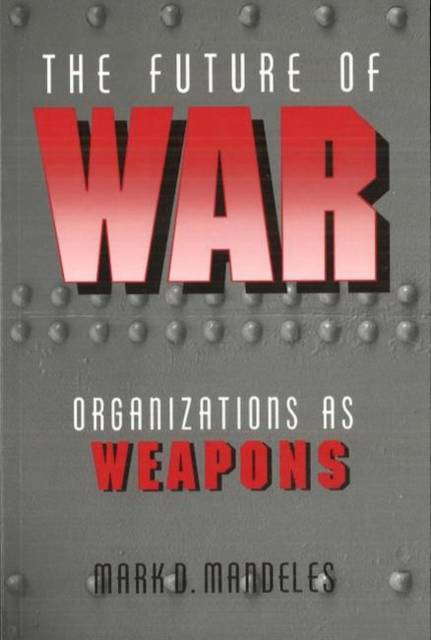
En raison d'une grêve chez bpost, votre commande pourrait être retardée. Vous avez besoin d’un livre rapidement ? Nos magasins vous accueillent à bras ouverts !
- Retrait gratuit dans votre magasin Club
- 7.000.000 titres dans notre catalogue
- Payer en toute sécurité
- Toujours un magasin près de chez vous
En raison de la grêve chez bpost, votre commande pourrait être retardée. Vous avez besoin d’un livre rapidement ? Nos magasins vous accueillent à bras ouverts !
- Retrait gratuit dans votre magasin Club
- 7.000.0000 titres dans notre catalogue
- Payer en toute sécurité
- Toujours un magasin près de chez vous
Description
Many analysts have heralded the U.S. military's Revolution in Military Affairs (RMA), a qualitative improvement in operational concepts and weapons that transforms the nature and character of warfare. Focusing on military technology, most argue that the new sensor, surveillance, communications, and computational technologies will usher in a period in which U.S. military capabilities will far exceed those of potential competitors. Developments in such fields as nanotechnology, robotics, and genetic engineering will greatly influence new weapons designs of the twenty-first century. These discussions about military revolutions, however, too often ignore or only pay lip service to the role of military organization in improving combat capability. They downplay the relationship between organizational structure and outcomes, the difficulties of coordinating large organizations composed of many people and offices having specialized roles, and the challenges of calculation, attention, and memory that face individuals making decisions with inadequate or ambiguous information under short deadlines or stressful situations. Mark D. Mandeles argues that the key to future combat effectiveness is not in acquiring new technologies but rather in the Defense Department's institutional and organizational structure and its effect upon incentives to invent, to innovate, and to conduct operations effectively. Doing so requires the military establishment to resist incentives to substitute short-term technological gains for long-term operational advantages and to maintain incentives for effective long-term innovation.
Spécifications
Parties prenantes
- Auteur(s) :
- Editeur:
Contenu
- Nombre de pages :
- 224
- Langue:
- Anglais
- Collection :
Caractéristiques
- EAN:
- 9781574886306
- Date de parution :
- 01-11-05
- Format:
- Livre relié
- Format numérique:
- Genaaid
- Dimensions :
- 161 mm x 237 mm
- Poids :
- 453 g

Les avis
Nous publions uniquement les avis qui respectent les conditions requises. Consultez nos conditions pour les avis.






